Plastic-Pollution Reduction and Bio-Resources Preservation Using Green-Packaging Game Coopetition
Abstract
:1. Introduction
1.1. United Nations Environmental Goals
1.2. Motivations
1.3. The Problem of Global Food Production
- The land used for livestock and crops for human consumption with the associated conversion of forests and grasslands into cropland or pasture.
- Pollution arising from farming (ruminant livestock produces methane through their digestive processes) and fishing (fuel consumption from fishing vessels) and the use of fertilizers.
- The use of large amounts of water for cultivation and irrigation.
1.4. Possible Actions for Mitigating Global Food Scarcity
1.5. Aims of the Paper
2. Methods and Theoretical Background
2.1. Game-Theory Approach
2.2. Game Theory in Environmental Preservation
2.3. Coopetitive Games
3. The Economic Model: Coopetitive Agreement between Food Competitors
- We define a suitable parametric game with a core “a la Cournot” between two similar large food producers/retailers (fast food) in local competition.
- We assume the presence of innovative factories producing paper, cardboard and new green-effective packaging (for instance, LEIPAflat (see the sustainable packaging solution for fresh food at https://multivac-group.com/it/news-e-eventi/news/detail/2019/04/1012-sustainable-packaging-solution-for-fresh-food/ (last accessed 31 October 2022))).
- The innovative packaging is produced using cardboard and recycled paper, characterized by a negligible amounts of plastic, easily separable by consumers and ready for a quick recycling process.
- In our model, the paper waste from food enterprises is used as raw material for innovative factories.
- In order to compensate for the higher cardboard and paper consumption for their fresh-food packaging, the two enterprises agree to offer a significant percentage of food with low environmental impact.
3.1. General Description
- Our economic model can be considered a two-player non-cooperative family G of games parameterized by a cooperative strategy belonging to a fixed compact interval of the real line.
- The two players are fast-food enterprises and the cooperative strategy consists of possible common investments into innovative green packaging for food products, together with the agreement that a significant percentage of food sold comes from sources with low environmental impact (vegetable-based proteins).
- Moreover, we consider curve G as a stochastic curve, defined also upon a real four-dimensional compact state-of-the-world space M.
- The elements of the space M are four-dimensional matrices individually representing the actual observable “efficiency” of the cooperative strategy (we simplify efficiency into a pair of interest rates and a pair of cost coefficients).
- Formally, our game G can be defined as a vector functionwhere
- -
- S is the strategy set of the two players, decomposable in the cartesian product
- -
- M is the space of all real (2,2) matrices;
- -
- is the payoff universe of the game;
- -
- and are the two payoff functions of the players, respectively, when the state of the world is realized.
3.2. Strategies
- Strategiesrepresenting any food quantity produced by the first fast-food enterprise (the unity of the above strategy interval represents the Cournot critical quantity defined and discussed in economic literature and in [34]);
- Strategiesrepresenting any food quantity produced by the second fast-food enterprise;
- Shared strategiesrepresenting the collective cooperative green strategy space. We simply assume that the chosen strategy set C is a compact interval and, consequently, we denote by the maximum of that interval. The two players determine together the strategy space C.
3.3. Cooperative Strategy Space
3.4. Payoff Functions
- The term represents the interest rate associated with the first player, on the collective investment decided by the two food resellers in the innovative paper packaging (meaning that the term is the net profit of the first player coming from the investment z);
- The term represents a coefficient-cost relative to the same investment and we assume, in , a quadratic dependence upon z, just to fix an order of polynomial approximation.
- The term represents the interest rate associated with the second player on the collective investment decided by the two resellers in the innovative paper packaging;
- The term represents a coefficient-cost relative to the same investment and we assume, in , a quadratic dependence upon z.
4. Results
4.1. Study of the Coopetitive Game G by Translations
4.2. Study of the Game for a Specific State of the World
4.2.1. The Initial Cournot Core
4.2.2. Translation Using the Vector Family
4.2.3. Choice of the Cooperative Strategy Set C
4.3. Possible Solutions of the Game
- The first ones are the solutions in which the only allowed collaboration consists of the cooperative frame determined by the investment, the common investment, in green technologies and green habits).
- The second ones are solutions in which the two enterprises can also collaborate at the level of the initial non-cooperative strategies; that is, at the level of production quantities).
4.3.1. Purely Coopetitive Solutions
- The Pareto boundary of the Nash payoff (equilibrium) path;
- The collectively optimal Nash payoff , which is by itself a purely coopetitive payoff solution;
- A purely coopetitive payoff solution , collectively equivalent to the optimal Nash equilibrium , starting from the threat point .
4.3.2. Fully Cooperative Scenarios
- A super-cooperative payoff solution ;
- A super-cooperative payoff solution .
4.4. The Nash Trajectory of the Coopetitive Game
4.5. The Collective Optimal Nash Payoff and the Optimal Parameter
4.6. Analytical Form of Purely Coopetitive Solutions
4.7. Interpretations of Purely Coopetitive Solutions
4.8. Super-Cooperative Solutions
4.9. Analytic Determination of the Purely Coopetitive Solutions
The Purely Coopetitive Payoff Solution
4.10. Analytic Determination of the Super-Cooperative Solutions
4.11. The Main Result
- In particular:
- The optimal investment (the investment of maximum collective gain) in the cooperative strategy is
- The purely coopetitive solution in the payoff space is
- The fifty–fifty sharing of the purely coopetitive solution (in the payoff space) is
- The corresponding super-cooperative solution in the payoff space is the pairwhere is the initial standard Cournot bargaining payoff
- The fifty–fifty sharing of the super- cooperative solution (in the payoff space) is
5. Discussion
5.1. Two Possible Maximum Collective Gains
5.2. Interpretation of the Space
- The first component of any strategy profile, which belongs to the strategic interval [0, 1], represents any food quantity produced by the first fast-food enterprise;
- The second component of any strategy profile, which belongs to the strategic interval [0, 1], represents any food quantity produced by the second fast-food enterprise;
- The third component of any strategy profile, which belongs to the strategic interval C, represents the common investment chosen to acquire advanced green technologies for innovative packaging derived from recycled paper waste;
- Any parameter belonging to the matrix space M—those matrices which are invertible and with a positive first column and negative second column—represents the state of the world at the end of the coopetitive process in which, finally, we can see the profits and costs deriving from the adoption of the green technologies.
5.3. Interpretation of the Payoff Solutions
5.4. Advantages for the Environment
5.5. Stability of the Payoff Solution
5.6. Two Possible Types of Sharing
6. Conclusions
6.1. Micro-Economic Point of View: The Sustainability of Natural Resources and Perfect Competition
6.2. Macro-Economic Point of View: Plastic Pollution and Food Marketing
- The actors to increase the gains with respect to a classic situation of non-collaboration;
- A reduction in production costs, by using raw materials;
- A reduction in environmental costs, by using low-carbon new technologies and lowering the inflow of plastics to the environment.
6.3. The Coopetitive Model
6.4. Solutions
- Two pure coopetitive solutions —solutions in which the only allowed collaboration consists of the cooperative frame determined by the investment, the common investment, in green technologies and green habits;
- Two super-cooperative solutions —solutions in which the two enterprises can also collaborate at the level of the initial non-cooperative strategies (that is, at the level of production quantities) on the coopetitive maximal Pareto boundary of our interaction.
6.5. Economic Interpretation
6.6. Environmental Impact of the Model and Its Solutions
7. Matlab Code
| Listing 1. Code of the game. |
| syms(‘x’,‘y’,‘z’) |
| m11 = 4; |
| m12 = −0.6; |
| m21 = 1.5; |
| m22 = −0.1; |
| %payoff functions |
| f1 = 4*x.*(1 − x − y) + m11.*z + m12.*z.^ 2; |
| f2 = 4*y.*(1 − x − y) + m21.*z + m22.*z.^ 2; |
| f = [f1; f2]; |
| v = [x y]; |
| J = jacobian(f,v) |
| D = det(J) |
| g = solve(D,y) % critical zone |
| % graphical representation of the payoff space |
| for z = [0:40/3600:40/6] %z maximum |
| %AB |
| x = linspace(0,1) |
| y = 0 |
| X1 = 4*x.*(1 − x − y) + m11.*z + m12.*z.^ 2; |
| Y1 = 4*y.*(1 − x − y) + m21.*z + m22.*z.^ 2; |
| plot(X1,Y1,‘b’) |
| hold on |
| %BC |
| y = linspace(0,1) |
| x = 1 |
| X2 = 4*x.*(1 − x − y) + m11.*z + m12.*z.^ 2; |
| Y2 = 4*y.*(1 − x − y) + m21.*z + m22.*z.^ 2; |
| plot(X2,Y2,‘b’) |
| %CD |
| x = linspace(0,1) |
| y = 1 |
| X3 = 4*x.*(1 − x − y) + m11.*z + m12.*z.^ 2; |
| Y3 = 4*y.*(1 − x − y) + m21.*z + m22.*z.^ 2; |
| plot(X3,Y3,‘b’) |
| %AD |
| y = linspace(0,1) |
| x = 0 |
| X4 = 4*x.*(1 − x − y) + m11.*z + m12.*z.^ 2; |
| Y4 = 4*y.*(1 − x − y) + m21.*z + m22.*z.^ 2; |
| plot(X4,Y4,‘b’) |
| %HK |
| x = linspace(0,1/2) |
| X5 = 4*x.*(1 − x − (1/2 − x)) + m11.*z + m12.*z.^ 2; |
| Y5 = 4*(1/2 − x).*(1 − x − (1/2 − x)) + m21.*z + m22.*z.^ 2; |
| plot(X5,Y5,‘b’) |
| end |
| %Nash curve |
| a = 40/6 |
| z = linspace(0,a) |
| x = 1/3 |
| y = 1/3 |
| N1 = 4*x.*(1 − x − y) + m11.*z + m12.*z.^ 2; |
| N2 = 4*y.*(1 − x − y) + m21.*z + m22.*z.^ 2; |
| plot(N1,N2,‘r’) |
| %maximum collective gain Nash equilibrium |
| z = −(m11 + m21)/(2*(m12 + m22)) |
| x = 1/3 |
| y = 1/3 |
| N1 = 4*x.*(1 − x − y) + m11.*z + m12.*z.^ 2; |
| N2 = 4*y.*(1 − x − y) + m21.*z + m22.*z.^ 2; |
| plot(N1,N2,‘bx’) |
| %Kalai-Smorodinsky curve |
| z = linspace(0,a) |
| x = 1/4 |
| y = 1/4 |
| N1 = 4*x.*(1 − x − y) + m11.*z + m12.*z.^ 2; |
| N2 = 4*y.*(1 − x − y) + m21.*z + m22.*z.^ 2; |
| plot(N1,N2,‘go’) |
Author Contributions
Funding
Conflicts of Interest
References
- Navarrete, S.; Borini, F.; Avrichir, I. Environmental upgrading and the United Nations Sustainable Development Goals. J. Clean. Prod. 2020, 264, 121563. [Google Scholar] [CrossRef]
- Verma, D.; Singh, V.; Bhattacharya, P.; Kishwan, J. Adoption of united nations sustainable development goals 2030 in environmental management system by earth moving and construction equipment industries in India. Ecol. Environ. Conserv. 2020, 26, 1290–1299. [Google Scholar]
- Munro, V.; Arli, D. Corporate sustainable actions through United Nations sustainable development goals: The internal customer’s response. Int. J. Nonprofit Volunt. Sect. Mark. 2020, 25, e1660. [Google Scholar] [CrossRef]
- Lopez-Tapia, D.; Sosa-Flores, A.; Palestino-Diaz, I.; Acosta-Soto, L.; Hosseini, S. One planet, one nation: An analysis of the actions taken in response to the 17 sustainable development goals in the 2030 agenda of the United Nations. WIT Trans. Ecol. Environ. 2022, 258, 269–281. [Google Scholar]
- Le Blanc, D.; Freire, C.; Vierrosc, M. Mapping the linkages between Oceans and Other Sustainable Development Goals: A Preliminary Exploration. DESA Working Paper No. 149 ST/ESA/2017/DWP/149. 2017. Available online: https://www.un.org/esa/desa/papers/2017/wp149_2017.pdf (accessed on 20 September 2022).
- Guillard, V.; Gaucel, S.; Fornaciari, C.; Angellier-Coussy, H.; Buche, P.; Gontard, N. The Next Generation of Sustainable Food Packaging to Preserve Our Environment in a Circular Economy Context. Front. Nutr. 2018, 5, 1–13. [Google Scholar] [CrossRef] [PubMed] [Green Version]
- OECD. Investing in Climate, Investing in Growth; OECD Publishing: Paris, France, 2017. [Google Scholar] [CrossRef]
- OECD. Rethinking Innovation for a Sustainable Ocean Economy; OECD Publishing: Paris, France, 2019. [Google Scholar] [CrossRef]
- Li, K.; Chen, Y.; Liu, J.; Zhang, L.; Mu, X. Online Food Delivery Platforms and Restaurants’ Interactions in the Context of the Ban on Using Single-Use Plastics. IEEE Access 2021, 9, 96210–96220. [Google Scholar] [CrossRef]
- Wang, H.; Li, J.; Li, Y.; Chen, G. Evolution Process of Recycling Chain of Takeout Packages Based on Behavioral Science. NeuroQuantology 2018, 16, 215–225. [Google Scholar] [CrossRef]
- Hong, L.; Cui, W.; Chen, H. A Novel Multi-Robot Task Allocation Model in Marine Plastics Cleaning Based on Replicator Dynamics. J. Mar. Sci. Eng. 2021, 9, 879. [Google Scholar] [CrossRef]
- Sun, J.; Fang, C.; Chen, Z.; Chen, G. Regional Cooperation in Marine Plastic Waste Cleanup in the South China Sea Region. Sustainability 2021, 13, 9221. [Google Scholar] [CrossRef]
- Xu, X.; Hou, Y.; Zhao, C.; Shi, L.; Gong, Y. Research on cooperation mechanism of marine plastic waste management based on complex network evolutionary game. Mar. Policy 2021, 134, 104774. [Google Scholar]
- Jusup, M. Social physics. Phys. Rep. 2022, 948, 1–148. [Google Scholar]
- UNEP. Prevention and Reduction of Food and Drink Waste in Business and Households. United Nations Environment Programme. 2014. Available online: https://wedocs.unep.org/handle/20.500.11822/25194 (accessed on 31 October 2022).
- Carfì, D.; Donato, A. Coopetitive Games for Sustainability of Global Feeding and Climate Change: Recent Developments. J. Environ. Manag. Tour. 2018, 9, 200–215. [Google Scholar] [CrossRef] [PubMed]
- Carfì, D.; Donato, A. Risk Management of food health hazard by meat consumption reduction: A coopetitive game approach. Soft Comput. 2020, 24, 13705–13716. [Google Scholar] [CrossRef]
- Frosch, R.; Gallopoulos, N. Strategies for Manufacturing. Sci. Am. 1989, 261, 144–152. [Google Scholar] [CrossRef]
- Helbing, D.; Brockmann, D.; Chadefaux, T.; Donnay, K.; Blanke, U.; Woolley-Meza, O.; Perc, M. Saving human lives: What complexity science and information systems can contribute. J. Stat. Phys. 2015, 158, 735–781. [Google Scholar] [CrossRef] [PubMed]
- Yazdanpanah, V.; Yazan, D.M. Industrial Symbiotic Relations as Cooperative Games. arXiv 2018, arXiv:1802.01167. Available online: https://arxiv.org/pdf/1802.01167.pdf (accessed on 31 October 2022).
- Chew, I.; Foo, D.; Tan, R.; Chiu, A. Game theory approach to the analysis of inter-plant water integration in an eco-industrial park. J. Clean. Prod. 2009, 17, 1611–1619. [Google Scholar] [CrossRef]
- Chen, S. An Evolutionary Game Study of an Ecological Industry Chain Based on Multi-Agent Simulation: A Case Study of the Poyang Lake Eco-Economic Zone. Sustainability 2017, 9, 1165. [Google Scholar] [CrossRef] [Green Version]
- Mouatassim, S.; Ahlaqqach, M.; Benhra, J.; Oualidi, M.A.E. Model based on Hybridized Game Theory to Optimize Logistics: Case of Blood Supply Chain. Int. J. Comput. Appl. 2016, 145, 1419–1431. [Google Scholar] [CrossRef]
- Nagurney, A.; Salarpour, M.; Daniele, P. An Integrated Financial and Logistical Game Theory Model for Humanitarian Organizations with Purchasing Costs, Multiple Freight Service Providers, and Budget, Capacity, and Demand Constraints. Int. J. Prod. Econ. 2019, 212, 212–226. [Google Scholar] [CrossRef]
- Shi, X.; Voß, S. Game theoretical aspects in modeling and analyzing the shipping industry. In ICCL 2011: Computational Logistics; Springer: Berlin/Heidelberg, Germany, 2011; Volume 6971, pp. 302–320. [Google Scholar] [CrossRef]
- Reyes, P.M. Logistics networks: A game theory application for solving the transshipment problem. Appl. Math. Comput. 2005, 168, 1419–1431. [Google Scholar] [CrossRef]
- Jafari, H. Sustainable development by reusing of recyclables in a textile industry including two collectors and three firms: A game-theoretic approach for pricing decisions. J. Clean. Prod. 2019, 229, 598–610. [Google Scholar] [CrossRef]
- Nalebuff, B.; Brandenburger, A.M. Co-opetition: Competitive and cooperative business strategies for the digital economy. Strategy Leadersh. 1997, 25, 28–33. [Google Scholar]
- Brandenburger, A.M.; Nalebuff, B. Co-Opetition; Currency Doubleday, Bantam Doubleday Dell Publishing Group, Inc.: New York, NY, USA, 2011. [Google Scholar]
- Carfì, D. A model for coopetitive games. J. Math. Econ. Financ. 2015, 1, 46–75. [Google Scholar]
- Carfì, D.; Donato, A.; Fredella, M.I.; Squillante, M. Plastic ocean reduction via green packaging coopetitive agreements. In Proceedings of the 2021 International Workshop on Metrology for the Sea, Learning to Measure Sea Health Parameters (MetroSea), Reggio Calabria, Italy, 4–6 October 2021; pp. 68–73. [Google Scholar] [CrossRef]
- Carfì, D.; Donato, A. Environmental Management through coopetitive urban waste recycling in eco-industrial parks. Mathematics 2021, 9, 2520. [Google Scholar] [CrossRef]
- Pedreira, H.; Melo, T. Supply Chain Coopetition: A Simulation Model to Explore Competitive Advantages in Logistics; MIT Center for Transportation and Logistics: Cambridge, MA, USA, 2020; Available online: https://ctl.mit.edu/pub/thesis/supply-chain-coopetition-simulation-model-explore-competitive-advantages-logistics (accessed on 31 October 2022).
- Carfì, D.; Perrone, E. Game Complete Analysis of Classic Economic Duopolies; Lambert Academic Publishing: Chisinau, Moldova, 2012. [Google Scholar]
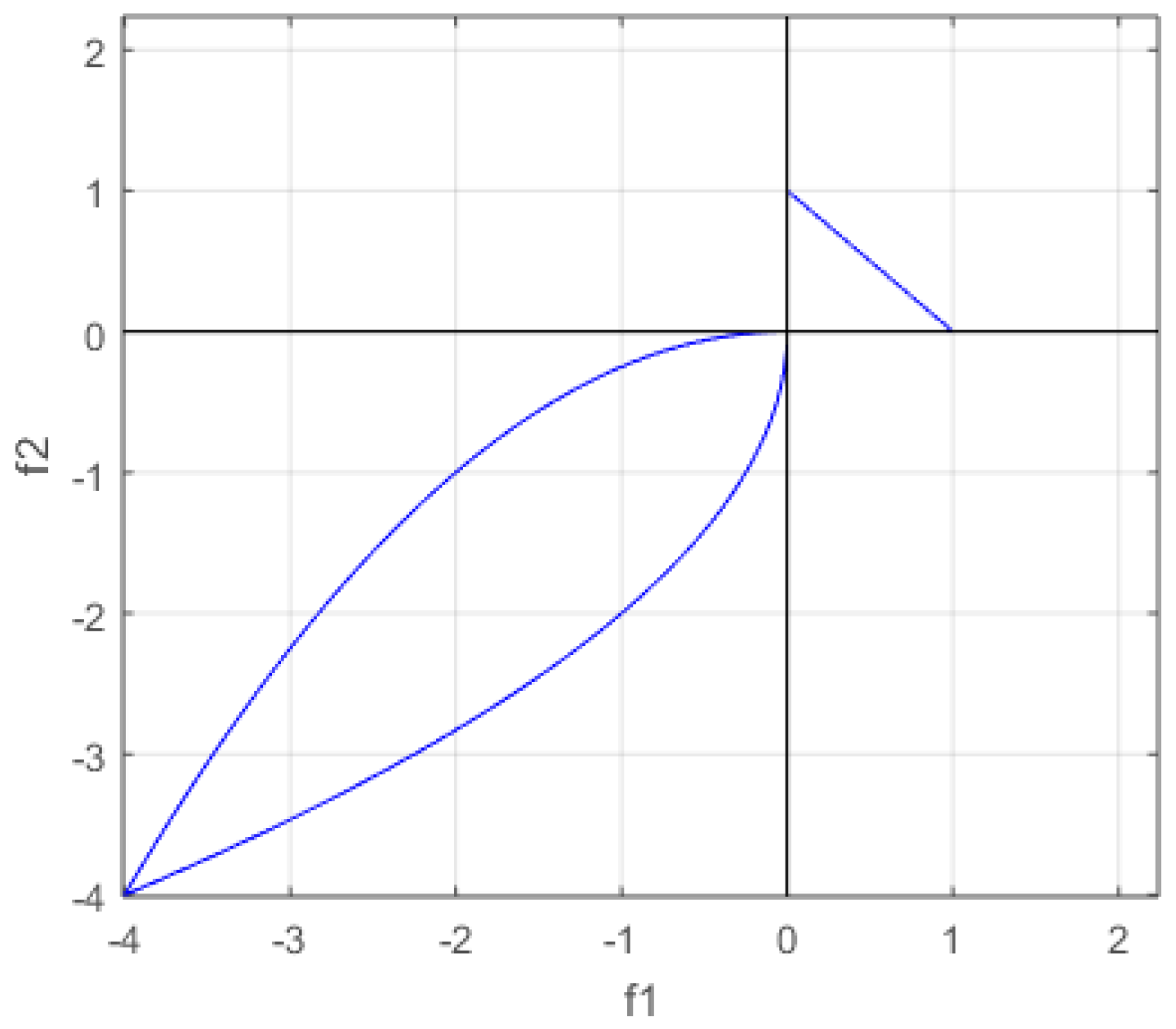
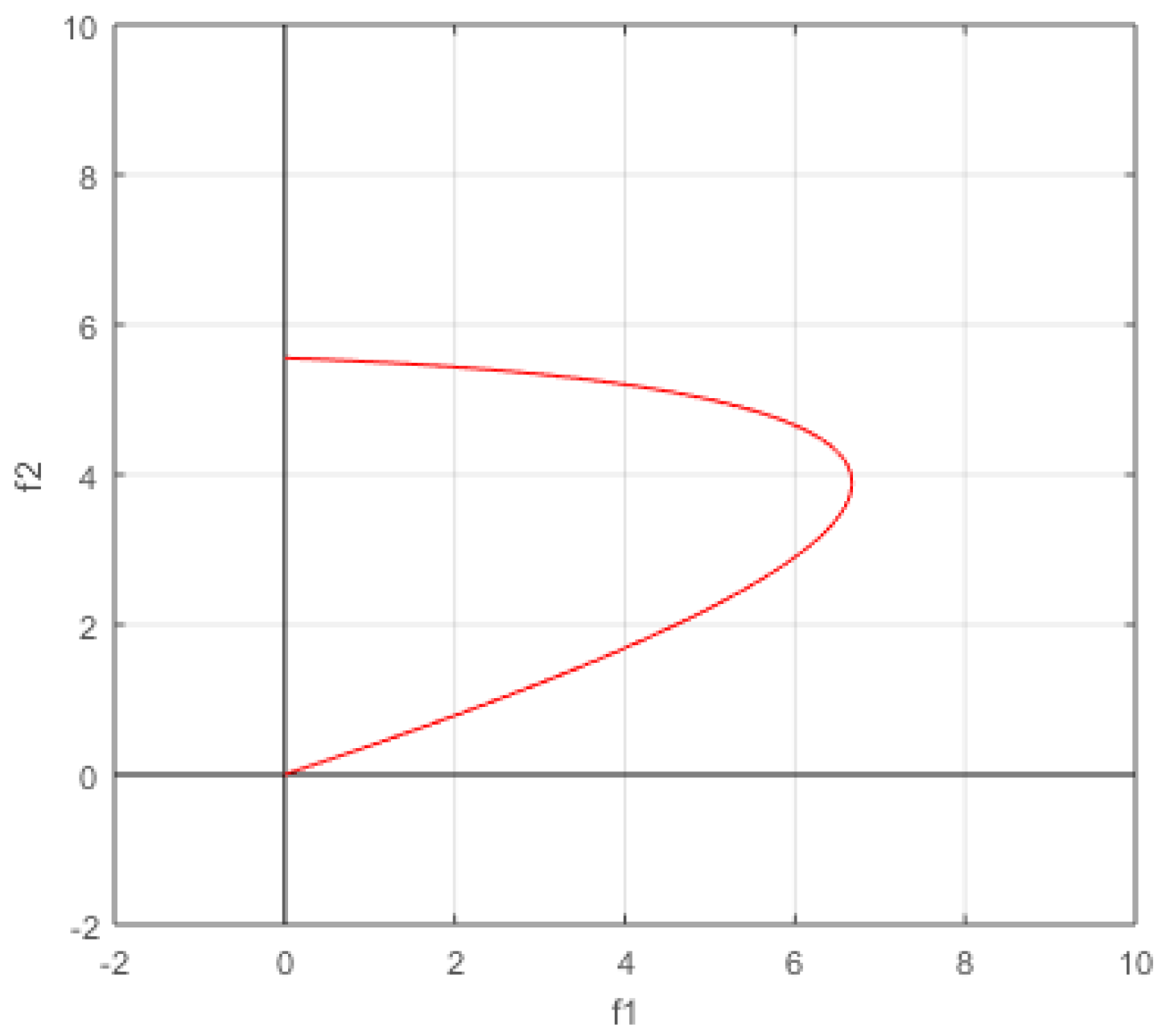
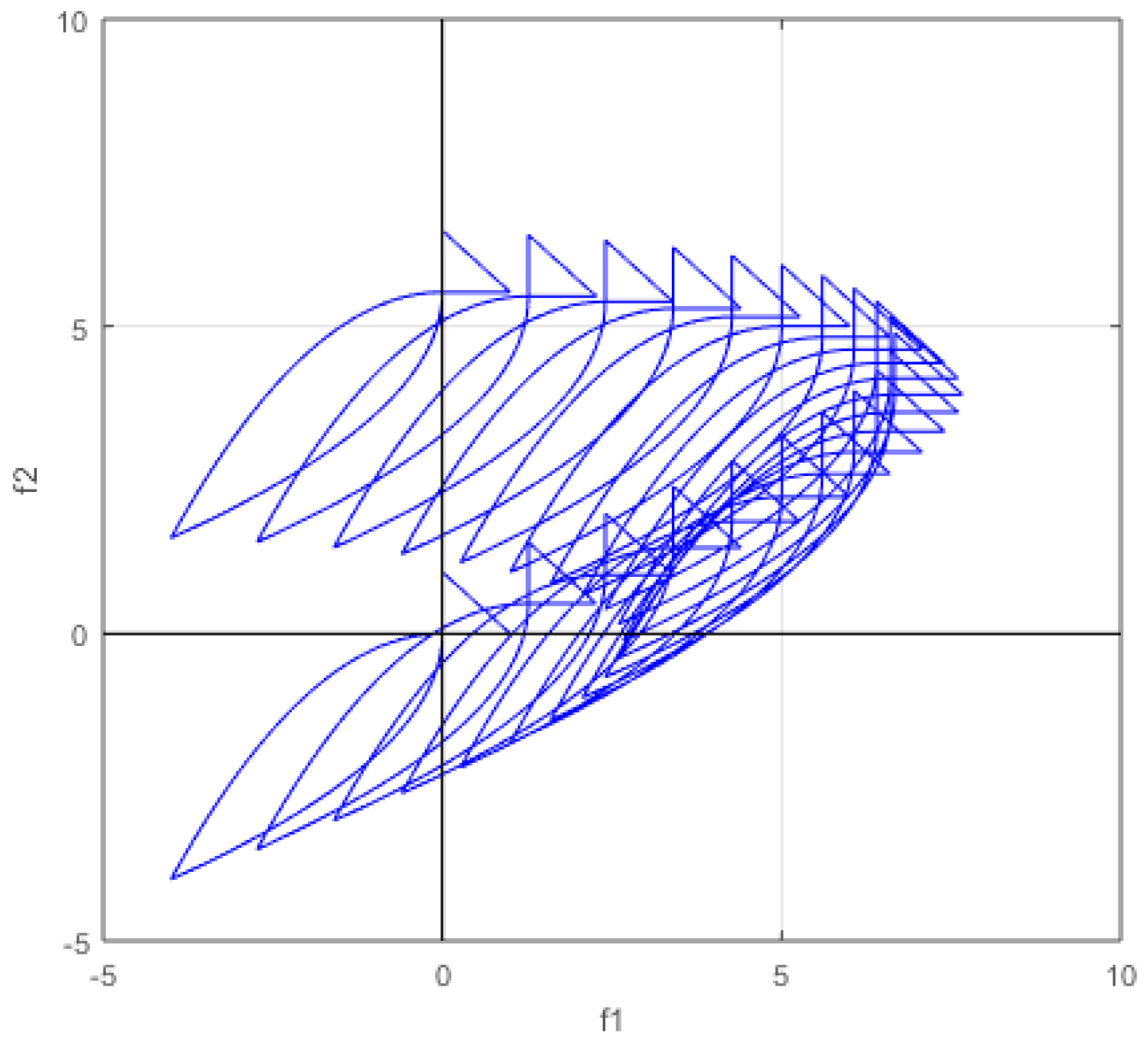
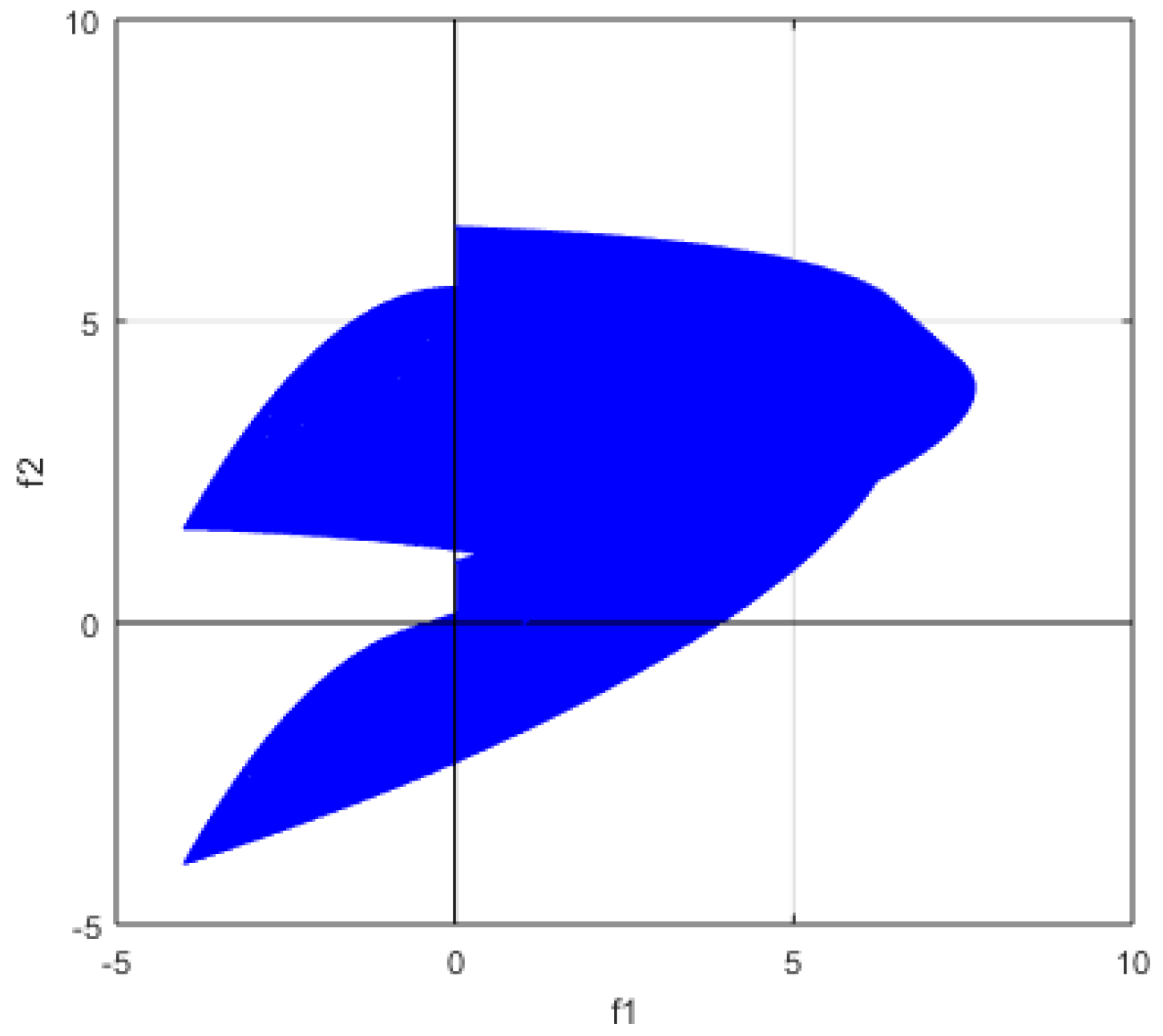

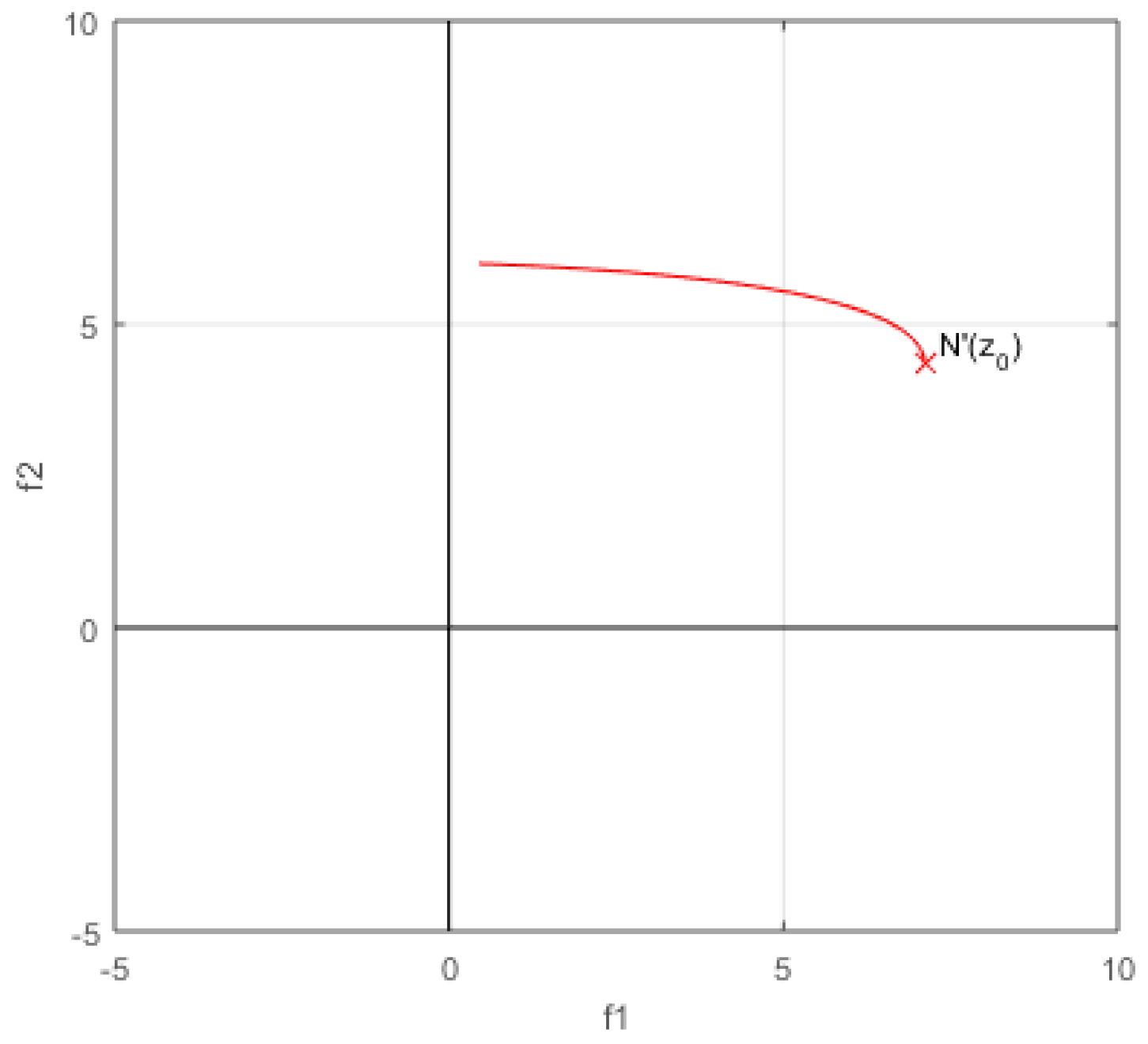
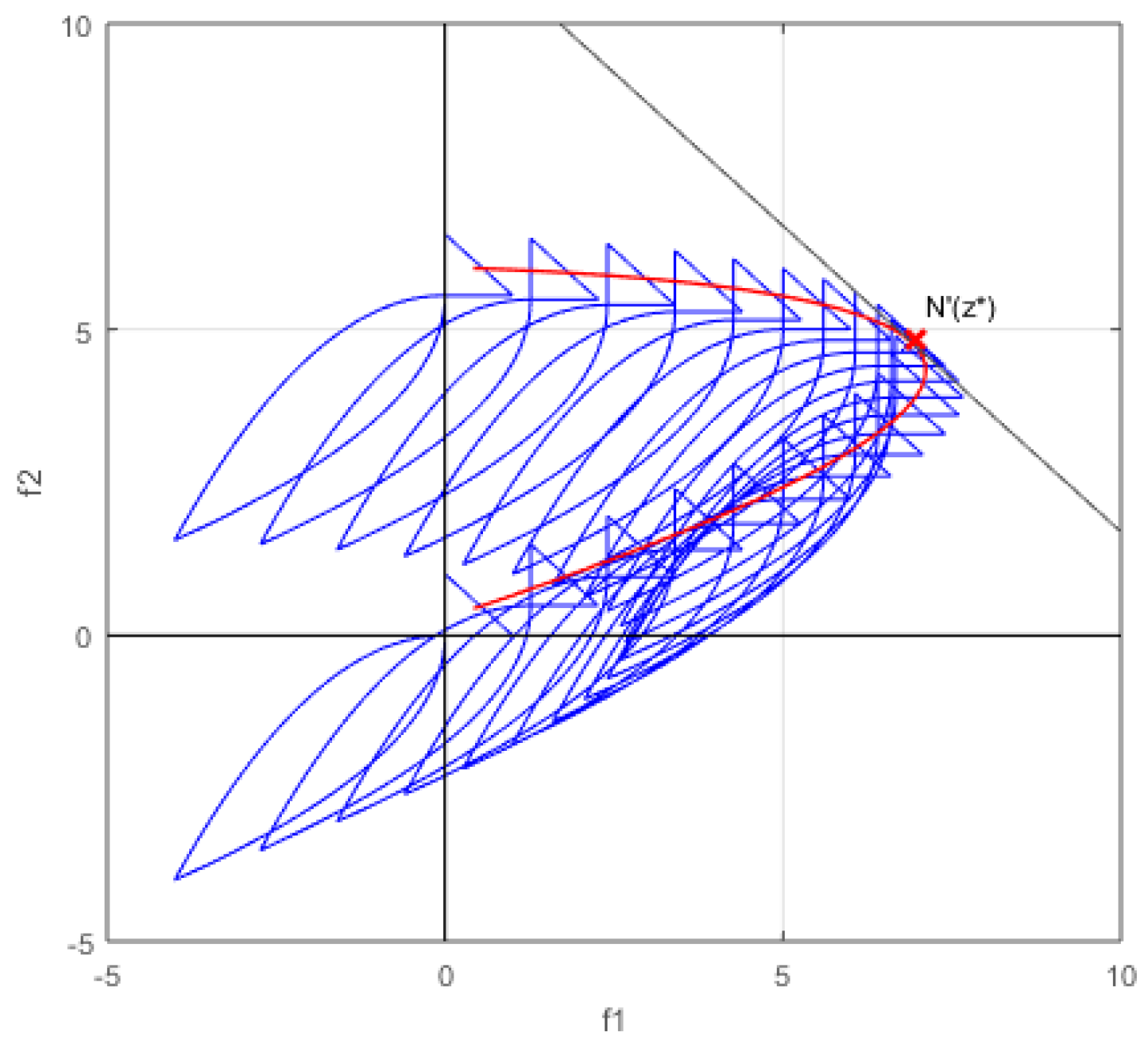
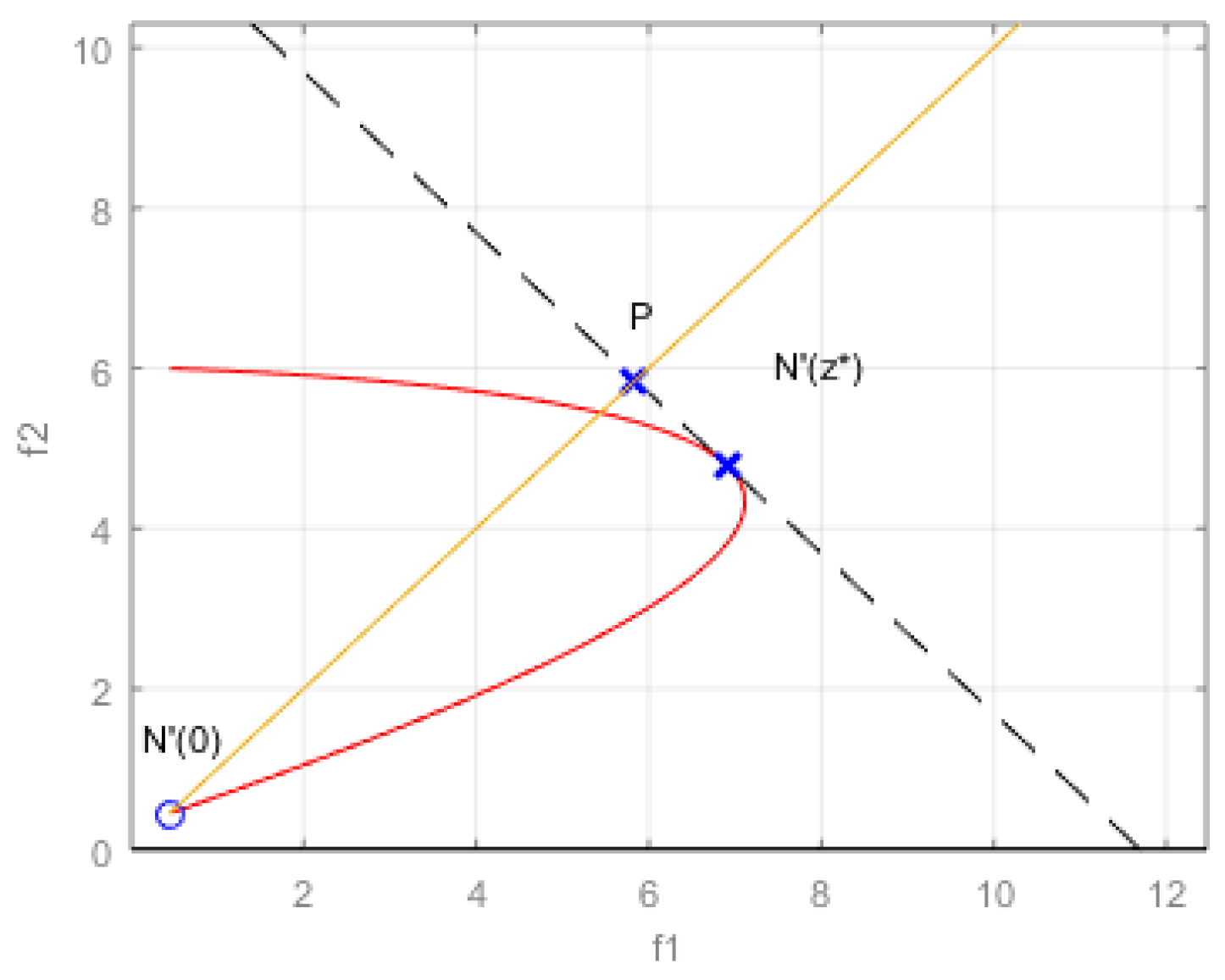
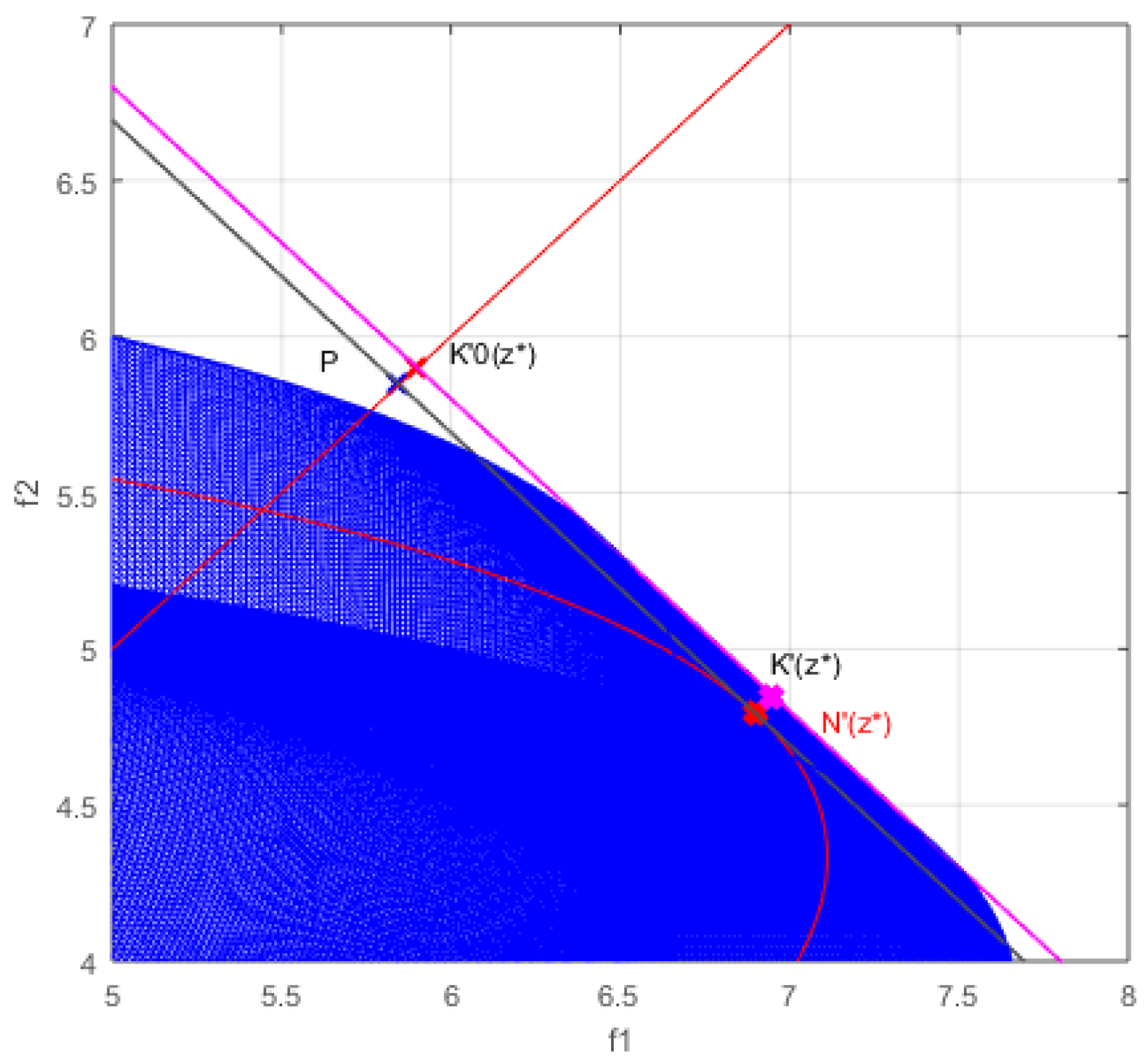
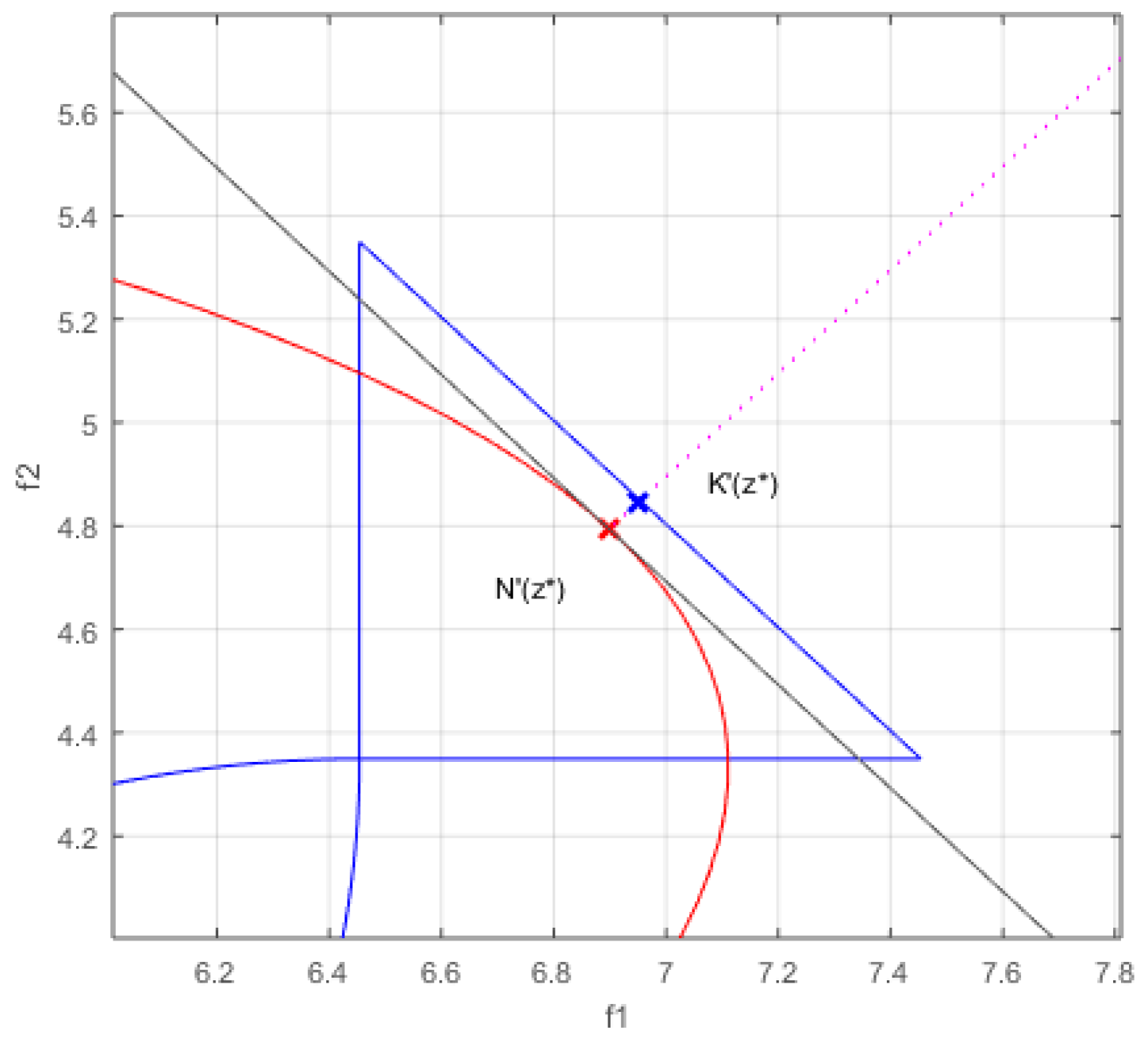
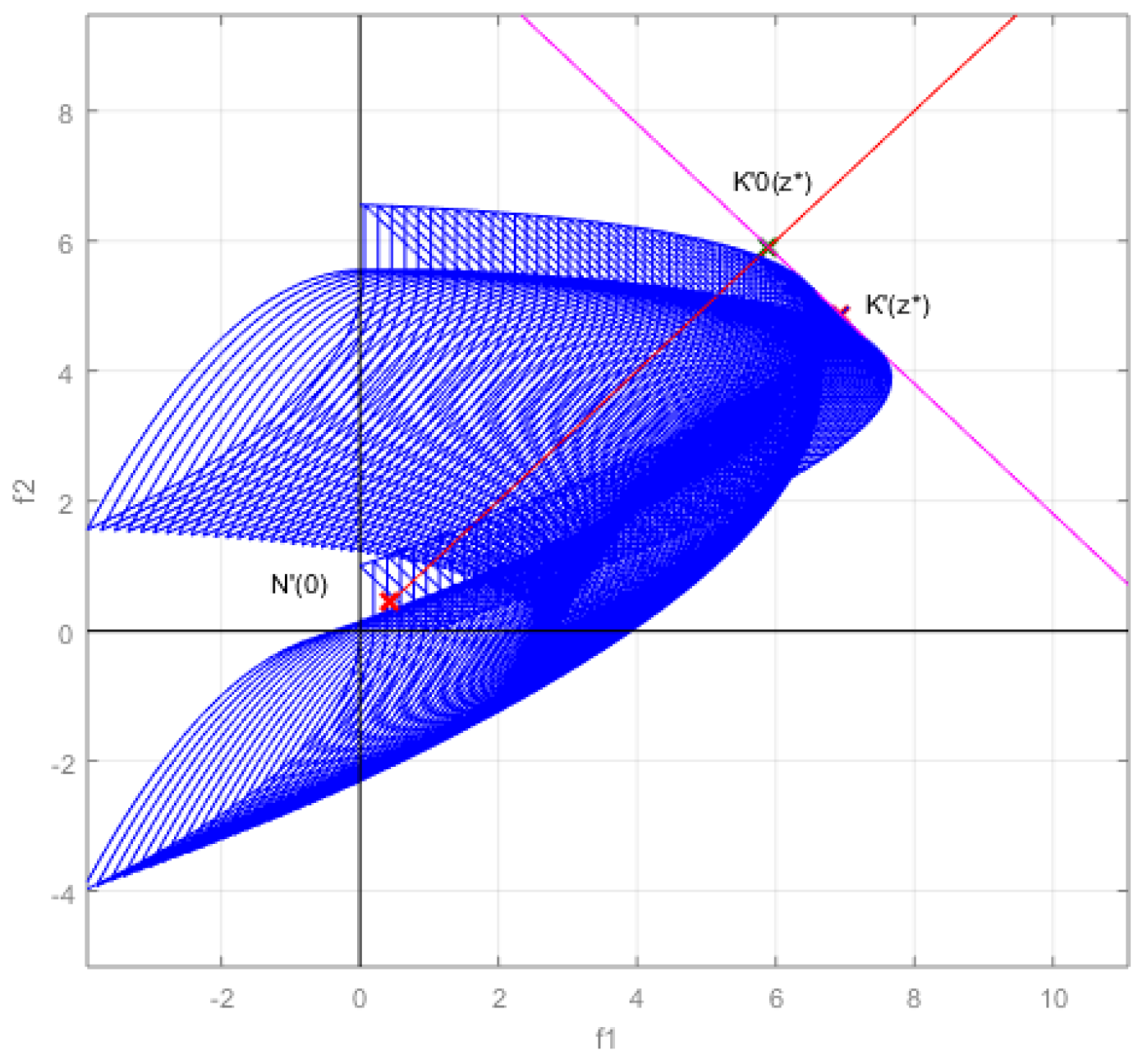
Publisher’s Note: MDPI stays neutral with regard to jurisdictional claims in published maps and institutional affiliations. |
© 2022 by the authors. Licensee MDPI, Basel, Switzerland. This article is an open access article distributed under the terms and conditions of the Creative Commons Attribution (CC BY) license (https://creativecommons.org/licenses/by/4.0/).
Share and Cite
Carfí, D.; Donato, A. Plastic-Pollution Reduction and Bio-Resources Preservation Using Green-Packaging Game Coopetition. Mathematics 2022, 10, 4553. https://doi.org/10.3390/math10234553
Carfí D, Donato A. Plastic-Pollution Reduction and Bio-Resources Preservation Using Green-Packaging Game Coopetition. Mathematics. 2022; 10(23):4553. https://doi.org/10.3390/math10234553
Chicago/Turabian StyleCarfí, David, and Alessia Donato. 2022. "Plastic-Pollution Reduction and Bio-Resources Preservation Using Green-Packaging Game Coopetition" Mathematics 10, no. 23: 4553. https://doi.org/10.3390/math10234553






